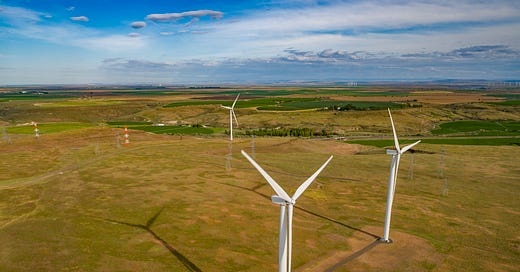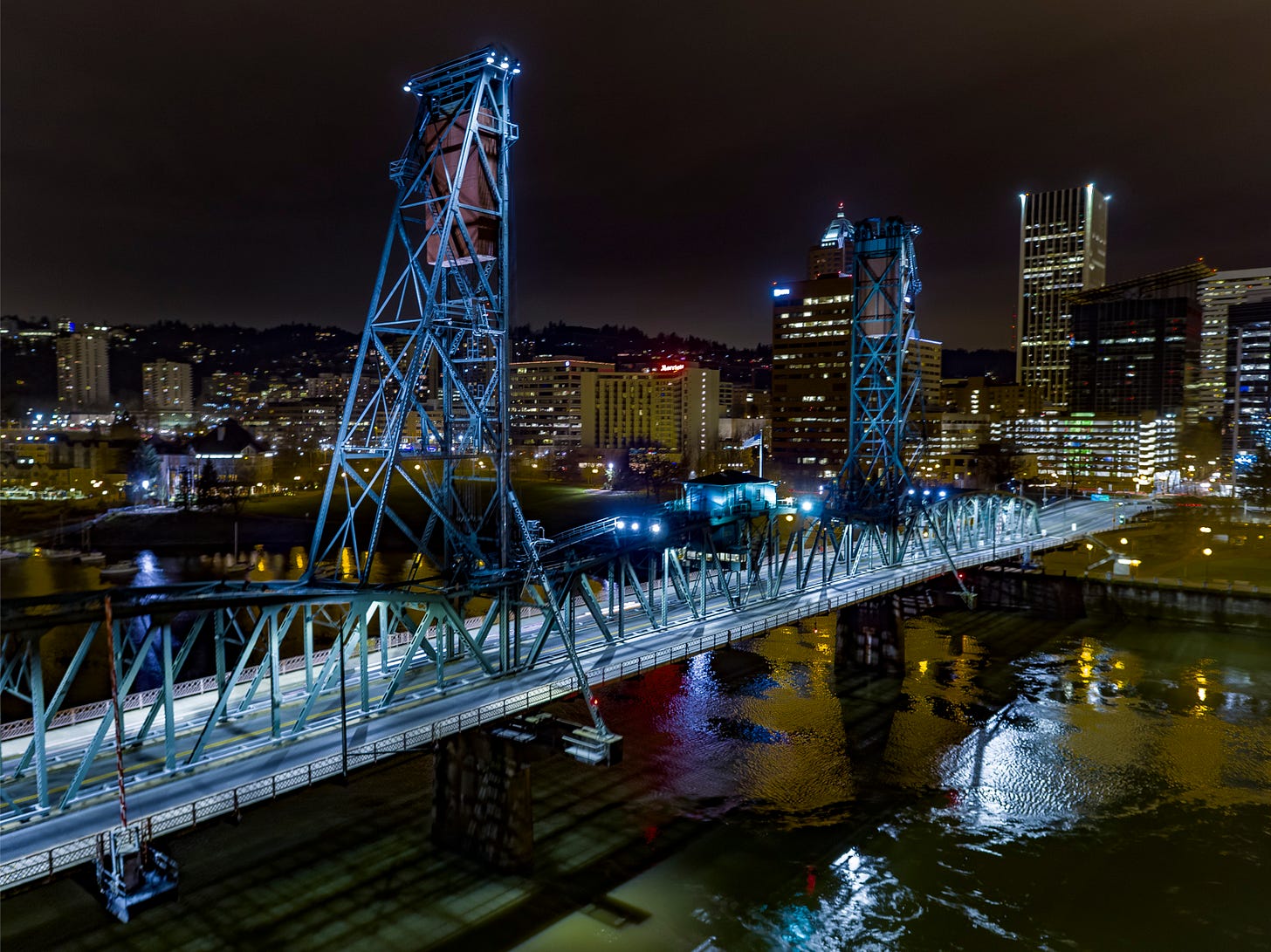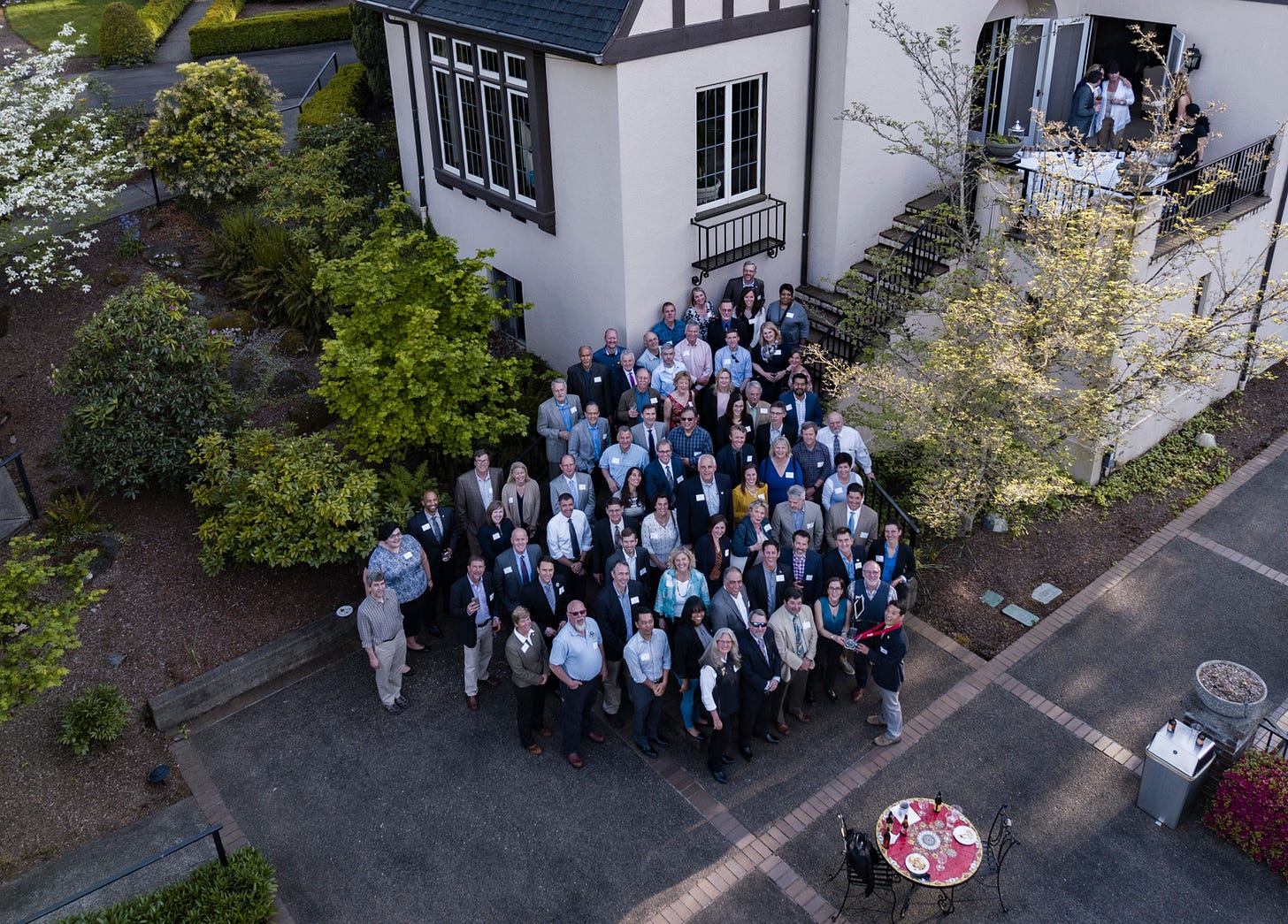Kenji Sugahara: Shifting Your Perspective on Drones
Drones not only have a large potential to change our lives for the better, they are already being used to benefit society already in some ways that may be invisible to you.
Housekeeping
Catch up on Loran Joseph’s latest post.
Get ready for Silverton Mayor Kyle Palmer’s first post tomorrow!
Clear your Saturday morning to make time for Chapter 6 of Rediscovering the Oregon Way.
Our community is just shy of being more than three times larger than Dayville, Oregon. Help us reach 500 subscribers.
Now to the post!
Kenji Sugahara is a West Salem resident. He is an attorney, Chief Pilot for A-Cam Aerials, the President and CEO of the Drone Service Providers Alliance, and a member of the FAA Drone Advisory Committee. He is an internationally recognized expert on the remote identification of drones. He is a pioneer having played critical roles on the 2017 FAA Remote ID & Tracking Aviation Rulemaking Committee and the ASTM group responsible for creating industry standards for remote identification. Kenji is also an Oregon Tourism Commissioner.
What’s your first reaction when you hear the word “drone”? Is it, “oh those annoying things,” or is it, “those things are just used to spy on neighbors,” or maybe, after watching one of those crazy Hollywood spy movies, you think “those things that kill people in foreign lands”?
You might want to think again. Not only are there many potential good uses for drones, they are already being put to good use.
Many folks joke about when they’ll be able to get their pizza delivery or get their Amazon delivery by drone. That’s still a long ways off and there are a lot of technical hurdles to overcome. But, drones are being used every day for purposes that are beneficial to society. For example, drones are used in many commercials you see online or on television and are used in many movies. Those soaring shots of beautiful landscapes, scenes tracking cars in impossible places, and crazy new perspectives that were previously out of reach – thank drones. Even many local news stations are using drones. KPTV often uses them on their morning show. They are often safer, more flexible, less expensive, and less intrusive than using a helicopter. Watch closely and you’ll start to recognize shots that are taken by drone.
Beyond captivating and informing us, drones can keep us safe and make us more productive. Consider that drones are used to inspect power lines, infrastructure, farmers’ fields, and can even be used to create 3D models of buildings. By using these tools, professionals in these fields save time and money to help people make decisions about critical repairs, hazards, harvesting, or issues with watering and fertilizer. Need a specific example? PG&E is using drones to inspect their expansive network of power lines. This information could help prevent wildfires such as those that caused a tremendous loss of life and property a few years ago. Drones are even being used to plant trees. Washington-based DroneSeed uses drones to re-plant trees in harvested areas, meaning trees can be replanted much quicker and much more safely than through traditional methods.
Drones are also critical to public safety. While many focus on the idea that drones are used to willy-nilly spy on people and check for violations, the actual truth is that this doesn’t happen. In many states there are requirements for warrants before a drone can be used for such a purpose. The vast majority of drone usage by public safety officials helps saves lives and public resources. For example, the Oregon State Police uses drones for accident reconstruction. What used to take hours, now takes less than 45 minutes.
If there’s a big accident on I-5 that shuts down the freeway, you can be sure that in most instances a drone is used to help with the reconstruction. In fact, a freeway was kept closed just to give time to OSP to get their drone unit to the location because the usage would allow the freeway to open that much faster. Another example of positive use by public safety departments: some SWAT units in police departments use drones to survey a scene for situational awareness or to watch for escaping suspects or to ensure the safety of their officers.
Still not convinced? Don’t forget the use of drones in search and rescue operations. In a December 2020 article, DJI, the world's largest manufacturer of consumer drones, noted that more than 500 people were rescued using drones. In many cases, thermal cameras attached to drones helped spot people in distress in hazardous terrain. Drones have been used to help search for missing people even in Oregon. In September of 2020, a drone was used by firefighters to help a stranded hiker in Depoe Bay. Also, in September, a Linn County deputy used a drone to find a person who had fallen out of their canoe near Albany.
Drones are also being used in classrooms around the world to get kids interested in STEM. Many schools not only teach kids how to put drones together, but show kids how they can be used in the field for societal benefit. McMinnville has a great program for drones as does Salem’s Career and Technical Education Center. These programs and others like them are providing today’s kids with skills that are as relevant today as precision engineering and data analysis. These skills will have a direct impact on our local economies by creating a professional workforce with the skillsets that are needed in our new technology economy.
Sometimes drones are misused. Some people are rightfully wary about drones invading their privacy. As with any technology, it’s not a new phenomenon. There’s a great article that was written by the Information Technology & Innovation Foundation titled, “The Privacy Panic Cycle: A Guide to Public Fears About New Technologies.” It describes a cycle of panic that occurs with the introduction of new technologies. There are some surprising and not-so-surprising examples. For example, the Kodak Camera was subject to the same panic during the late 1800’s. Privacy advocates of the day hyped the idea of a “Kodak fiend who would take pictures of people without permission.”
The New York Times wrote of Kodak fiends snapping pictures of women without their permission and of threats made against those who used their cameras too freely. Local governments and businesses subsequently banned Kodak cameras at beaches and other outdoor spaces. One beach resort feared the Kodak fiend so much it posted the notice, “People are forbidden to use their Kodaks on the beach.”
Another great example is the cellphone camera. When they were first introduced in the early 2000’s privacy advocates had the same exact reaction with policymakers making the same mistakes. In December 2003, a Hartford Courant article talked about the widening bans on cellphone cameras.
First, British officials declared camera phones couldn't be used at swimming pools, fearing pedophiles might abuse them. Then, concerns were raised in Korea that the cameras might spur corporate theft, so some companies banned them at manufacturing and research facilities. Some retail stores in Japan also banned the devices from dressing rooms.
Almost all of the fears never came to fruition. And in a true panic cycle conclusion, more reasonable heads prevailed and the technologies have become integral to our society. The same can be said about drones, we are still early in the panic cycle and many advocates are airing concerns about privacy and are wanting privacy laws passed. Instead of focusing on the tool, these advocates should be looking at ways to apply current laws to drone-related behavior. One way to think about drones is that they are simply a camera that happens to be in the air. If someone uses it for illegal surveillance or invades someone’s privacy, then the response should be to prosecute them for illegal activity, not the use of a drone to engage in a less than desirable activity.
Still, there are a few people who think they are the subject of spying if they see a drone in the air. I hate to break it to those folks, but 99 times out of 100, the people who are flying the drones are usually taking a picture or video of a sunset or taking in the scenery. More often than not, you are not that interesting.
But to those who are still concerned, the Federal Aviation Administration (FAA) has implemented rules that require remote ID for drones—in essence, a digital license plate for drones. Most drones manufactured for sale in the US will be required to have a remote ID by September 2022. Most drones will have to comply with the remote ID rule by September 2023. Drones that are under 250 grams will not have to have remote ID unless they are used for commercial purposes.
What’s more, drones that are flown at FAA Recognized Identification Areas (areas that have gone through a FAA process) will not need remote ID. What does this mean to you? If you think a drone is spying on you, in most instances you will be able to pull out your cellphone, check an app, and get the drone’s license plate. Will you be able to look up the pilot’s information? No. But you can get it to a law enforcement officer who can then look it up and talk with the person.
Though a few uses of drones have negative effects, the majority of uses of drones have numerous positive results. Drones not only have a large potential to change our lives for the better, they are already being used to benefit society already in some ways that may be invisible to you. I hope that this article has changed your perception of drones that has been perpetuated in popular media and in the news. Instead of, “oh no a drone,” I hope your reaction will now be, “that’s neat!”
*************************************
Send feedback to Kenji:
@DroneDefender
Keep the conversation going:
Facebook (facebook.com/oregonway)
Twitter (@the_oregon_way)
Check out our podcast:







